The never ending quest for experiences to enhance or add to your repertoire of reenacting keeps individuals and unit commanders continually busy. For years I have tried to work on such things for my own unit, The Massachusetts Provincial Battalion. In the fall each year we host an event at our fort, Ft. Bagley, in the middle of the lower peninsula of Michigan. (In 2013 our event is September 14-15.) We call the event our Challenge Weekend. This past year, 2012, I decided to give the men a more extensive workout in an attempt to give them the feel of more skills used by our historic counterparts.
I asked my two subalterns to do a school yard pick of the men present from our three companies (our two hat companies and our light infantry company). From our fort each of the two squads formed from the picks, marched out the front gates and into the 17 acre hard-wood forest. I had designed an 18th Century (F&I Period) course of challenges for them to test their skills as soldiers and as men of the period.
Each man was given the scenario prior to arriving to be fully equipped in their issued uniforms, have full marching kits and battle gear as well as equipping themselves for a three day scout. Our soldiers were issued the standard 1750’s style uniforms but blue/red faced for colonial troops of our colony. For marching kits they were to carry an issued hair-on knapsack and bed-roll. Their battle gear could vary some, dependent on the company they belonged to, but they primarily carried the Brown Bess military musket, bayonet, a sword or belt ax and cartridge box. Each man also was expected to carry a canteen and a haversack with food. The troops were also told to be ready to cook, camp, and survive as their historic counterparts did.
No one knew what challenges awaited them for sure. One of the first scenarios was “road building / brush clearing.” Intelligently each subaltern took saws and axes from the barracks stores before leaving and once on the southern trail in the woods were halted and I gave them orders to clear and fix the trail for the next 100 yards wide enough for a wagon to traverse. Both squads upon receiving their orders posted guards on their weapons and held a man in the rear and sent another forward to watch for the enemy. The others worked diligently clearing brush, small trees and limbs with belt axes, camp axes, fascine knifes and large and small saws. Both teams did well on this assignment.
Next they were given a rest period and during this time they were given a list of questions of the period for soldiers of the Bay Colony, things they would have known. They were able to work as a team to answer the questions and had to have a period writing tool to write down their answers. Both squad subalterns had writing tools, but one team knew quite a few more answers than the other. Below is the list of questions they had to answer.
- Who commanded the regiment that was to become “Bagley’s” at the Battle of Lake George?
- What were the names of the two towns that more men recruited from to form Bagley’s Regiment?
- Which was the average wages per month of a Massachusetts Centinel in the F&I War? (A. $50 B. $75 C. $100 D. $125)
- What was Bagley’s regimental surgeon’s last name in 1758 and 1759?
- What year was the fall of Ft. William Henry?
- What years was Lord Loudoun overall commander of the British army in America?
- Who was the ranking office from Massachusetts for much of the war?
- What years were Bagley’s Regiment stationed at Louisburg?
- What was a common fruit that regimental surgeons carried in their medical boxes that you also can use to make a pie?
- What was the last name of the Black Centinel from Bagley’s Regiment that you would have asked to make you a scrimshawed powder horn?
For the third challenge each squad was given was the task of building a shelter that all the squad could get into in case of inclement weather. This was also a timed task. Each squad used their tarps and blankets along with ropes and existing trees and quickly erected hanging lean-to type shelters. It was clear at this conjecture that one team was working together better as a team and may become more successful in the challenge coarse.
Next the men were told that one of their squad had sustained a bad leg injury in the wood trimming scenarios and they were to apply period medical treatment and carry that man to the next scenario. Both teams did a good job treating the man, cleaning the wound, wrapping it in dressings, and going as far as to apply a tourniquet. Both teams also picked one of their smallest men. One squad fashioned a stretcher out of two stout sticks and wrapped their blankets around it to self lock the blanket. The other squad attempted to have the injured man jump on the back of members and carry him individually. This proved to be one of the hardest challenges physically for both teams, they were really panting and out of breath after.
At the fifth challenge station the men were given issued rations (beef [that I pre-boiled], rice, beans [that I pre-soaked], molasses, sugar, tea, rum, butter, cinnamon). They were given the task of starting a fire and using the issued rations with what food they brought to make a meal. I timed them and watched to see how they worked as a team. Both squads got their fire going quite fast, and most the men had fire starting kits, but not all to my surprise. The challenge with one group was working together and the other team did not get the tastes out of their food as the other group. They used items they had in their packs and haversacks like corn boilers, small tea pots, as well as their musket ramrods and bayonets to support the utensils on the fire. There were some shining stars at this challenge and also on the other hand some real novice as well.
While the men were in this spot they got another breather and we went through their issued items and uniform to see how many had prepared for the scenario as ordered. Most had all issued items but a few were missing an item or two, which was disappointing as they were given written orders to know how to pack.
Also, since we were in an area of sand and not grass I chose to test their loading and firing skills and ordered the men to load and fire blanks as many as they could in one minute. The rate of 5-6 per minute is what they should be able to achieve. Many did, but one man was able to get off 11 rounds in a minute, a feat all were amazed by!
The final test was live firing. Before the event I had taken some Joe Lee drawing of French soldiers and cut and pasted them on the computer to represent a double rank of men. Then I put them on my projection unit at work on a Sunday and traced them onto large sheets of paper, which I then placed on cardboard and screwed this to a wooden crate that we have up against a tree in a ravine where there is a hill as a backstop so there is no chance of strays leaving the firing area. The men at 25 yards were able to take three shots. Most had brown bess muskets and two had fowlers. The firing was surprisingly accurate with twelve wounding shots, seventeen kills and only four missed shots. What was the most honorable and delightful was the skill at volley firing performed by the men. I had them fire as a 1st and 3rd rank (first rank kneeling and second standing). They were deadly! Only two men out of twelve missed and that was because they miss fired. This was a true learning experience for the men. Some were what we classify as “shooters,” but a few had never shot any firearm let alone a flint lock brown bess with live rounds. We did not patch the balls but rather used 69 and 735 caliber balls and placed the paper cartridge over the round to wad. It is my belief that the vast majority of soldiers in the French and Indian War were issued 69 caliber balls for their 75 caliber musket and that is what we were attempting to emulate, and with this accuracy it works.
In summary, I highly recommend, if your unit does not do this type of training/challenging weekend that you investigate doing so. It prepares the men of your unit for a mind set when they reenact. It also gives experiences that they can draw from when they talk to the public that they have actually done some of the things that their historic counterparts did during the war. It is also gratifying to see how you, as unit commanders have done in training your men and it will give you ideas of voids that you need to work on so you can have one of the best units of reenactors in our hobby.
If a unit is interested in participating in The Massachusetts Provincial Battalion’s Fall Challenge weekend contact the author at: kemmerc@hotmail.com

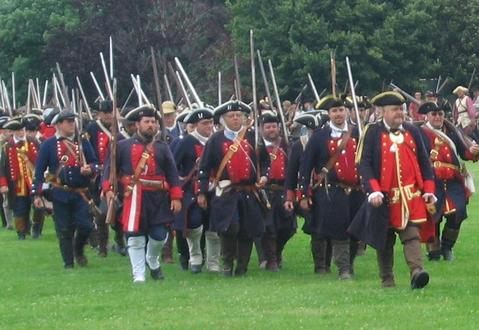
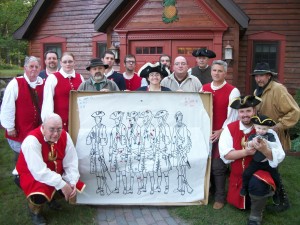
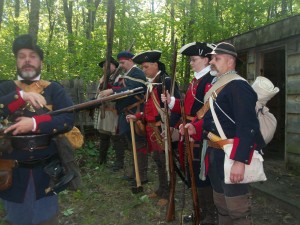
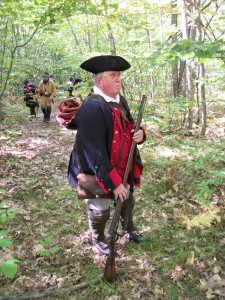
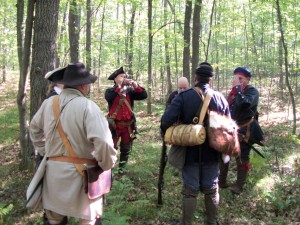
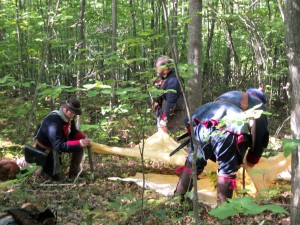
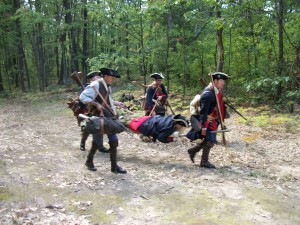
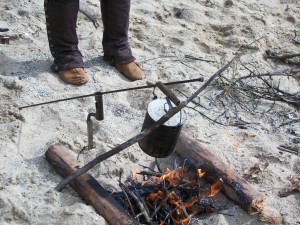
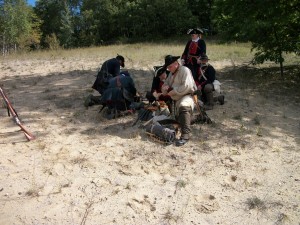
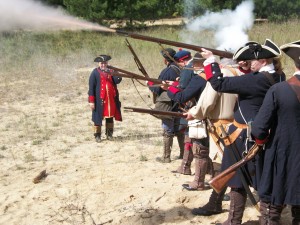
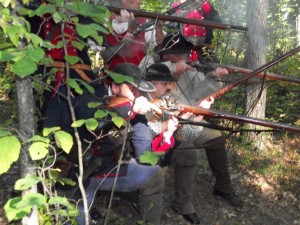
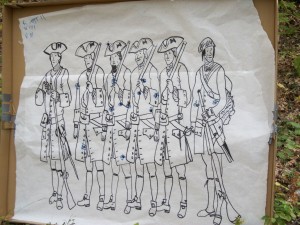






Leave a Reply